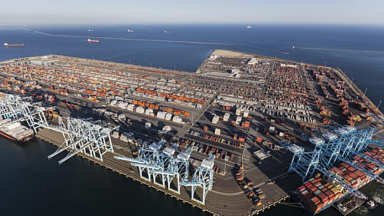The freight train returned to the railway logistics park on Sunday, helping bring back 1,275 metric tons of corrugated paper and other goods for import and export-oriented companies based in the Guangdong-Hong Kong-Macao Greater Bay Area.
It took 17 days for the train to travel from Central Europe, entering China via the port of Alataw Pass in the Xinjiang Uygur autonomous region, to arrive at the Zengcheng Railway Logistics Park, a journey of more than 10,000 kilometers.
Demand for import and export goods has increased significantly in the Bay Area, following the optimization and adjustment of the COVID-19 control policy, according to Xu Hongzhan, a manager at Guangzhou Dashunfa International Logistics.
«For local trade enterprises, the two-way connection of the China-Europe freight train is a fast and safe logistics channel, helping significantly shorten the transportation time of import and export goods and effectively reduce the logistics cost,» said Xu on Monday.
Operation of the two-way international logistics channel of China-Europe trains will be normalized at the logistics park, helping to build the highway and railway intermodal center in the city into an international train hub in the Bay Area, according to China Railway Guangzhou Group.
As a major national construction project and one of the four national-level logistics hubs in Guangzhou, the intermodal transport hub has launched 20 international logistics lines to Europe, Central Asia and Southeastern Asia, since its freight train service to Germany began in July 2021.
It has become the most frequent international train departure hub in the Greater Bay Area, running five to seven China-Europe trains and one to two China-Laos freight trains every week, according to the group.
The railway group said it would work with local customs and transportation authorities to facilitate construction of the first phase of the highway-rail intermodal transport hub and continue to improve the transport logistics network system.
After completion of the first phase project, the highway-rail intermodal transport hub is expected to become the largest logistics hub for production and services in the Bay Area, helping Guangzhou to accelerate construction of an international modern logistics and consumption center, according to the railway group.
The cross-border freight train linking China and Europe connects 108 Chinese cities and 208 cities in 25 European countries, according to China State Railway Group, the national railway operator.




